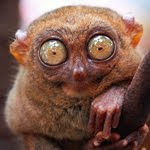
Distorsión. Los nuevos lenguajes figurativos, que convivieron con los informalismos abstractos, configuraron las nuevas imágenes del hombre contemporáneo a través de los patrones de automatismo y libertad expresiva derivados tanto del gesto expresionista como del automatismo surrealista. A partir de los retratos de Dora Maar, que marcaron el punto de máxima violencia en la obra de Picasso, da comienzo un nuevo capítulo de belleza trágica y monstruosa como metáfora de la nueva conciencia moderna. Este paradigma sería esencial para una serie de artistas de la generación de la segunda mitad del siglo, marcados por un sentimiento generalizado de pesimismo y ansiedad. Se imponen distintas maneras de deformación y, en ocasiones, de metamorfosis del cuerpo. Madrid, Museo Thyssen-Bornemisza, El espejo y la máscara: el retrato en el siglo de Picasso, February-May 2007, pt. 8: Identidades metafóricas, http://www.museothyssen.org/thyssen/exposiciones/WebExposiciones/2007/retratos/index.htm (12.02.09).






No comments:
Post a Comment